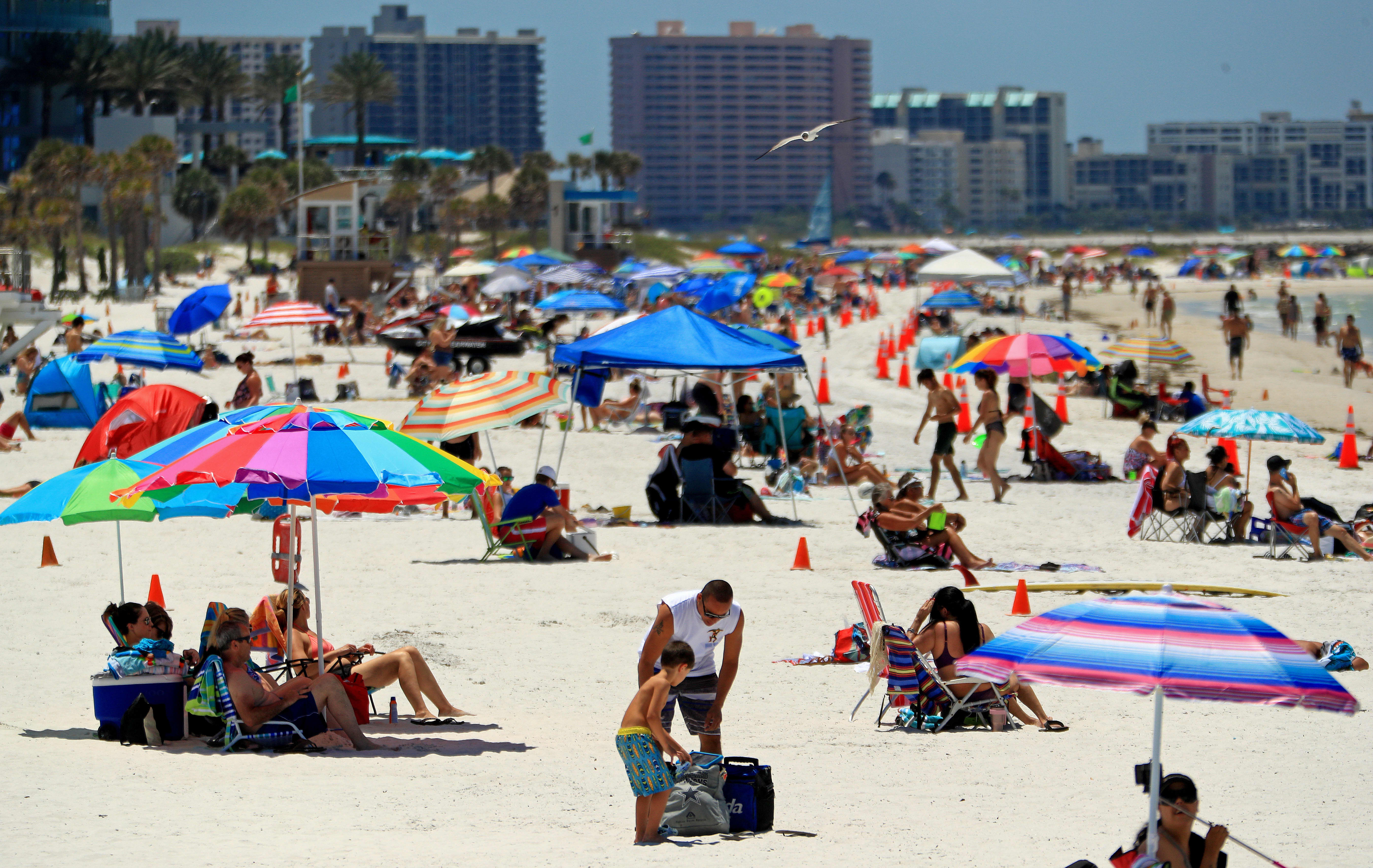People visit Clearwater Beach after Governor Ron DeSantis opened the beaches at 7am on May 04, 2020 in Clearwater, Florida.
Mike Ehrmann | Getty Images
The rise in coronavirus cases seen in about half a dozen states across the U.S. isn’t the feared “second wave” — it’s still the first, scientists and infectious disease specialists say.
To be defined as a second wave the virus would need to retreat and reappear, or a new variant would have to emerge, said Ian Lipkin, a professor of epidemiology and director of the Center for Infection and Immunity at Columbia University. “The recent increase in cases does not reflect either.”
Covid-19 has sickened more than 2 million Americans and killed at least 113,820 since the first confirmed U.S. case less than five months ago, according to data compiled by Johns Hopkins University. While new cases are on the decline in early hot spots such as New York state, cases are on the rise in places such as Texas, Florida and Arizona, with the U.S. still seeing roughly 20,000 new Covid-19 cases a day, Hopkins data shows.
A handful of states including New York, New Jersey and Massachusetts have experienced “clear first-wave outbreaks,” said Nicholas Reich, a professor of biostatistics and epidemiology at the University of Massachusetts, Amherst. “However, many states have had more of a first-wave plateau, without a clear decline for many weeks.”
Arizona reported an additional 1,412 new cases on Thursday, bringing the state’s total to 31,264. The number of cases has climbed by nearly 300% since May 1 and has roughly doubled since Memorial Day. Texas this week reported three straight days of record-breaking coronavirus hospitalizations in the state. Coronavirus hospitalizations in Texas have increased about 32% since the Memorial Day holiday, according to state data.
States such as Arizona and Texas “never really got rid of the first wave,” former FDA Commissioner Dr. Scott Gottlieb told CNBC’s “Squawk Box” on Thursday. “They weren’t really that hard hit relative to other states during February [and] March. They had some infection, they had persistent infection. Now we are starting to see it go up as they reopen.”
Last week, Centers for Disease Control and Prevention Director Robert Redfield told lawmakers he was worried Americans aren’t following the agency’s advice as states begin to reopen after shuttering businesses and limiting activities as part of social distancing measures intended to curb the spread of the virus.
Crowds of people have been seen in recent weeks at protests, over the Memorial Day holiday and at the SpaceX launch.
“We will continue to message as well as we can,” said Redfield, who’s on the White House coronavirus task force. “We’re going to encourage people that have the ability to require to wear masks when they are in their environment to continue to do that.”
Marc Lipsitch, a professor of epidemiology at the Harvard School of Public Health, said there is no way to attribute the rise in cases to one event.
“Transmissions occur, probably extra ones on a holiday like Memorial Day, which lead to cases and hospitalizations,” he said. ”All the activities we engage in affect that and thus affect whether say a particular transmission (John infected Sally) on Memorial Day or at a protest or wherever leads to Sally not infecting anyone else.”
Lipkin echoed those remarks, saying, “High-density gatherings on any basis increase the risk of virus transmission.”
He and other epidemiologists noted that the U.S. and other parts of the world will continue to see cases until there is an effective drug or a vaccine. There are at least 136 Covid-19 vaccines under development as of June 9, according to the World Health Organization. At least 10 of those are already in clinical trials.
“Until we have a vaccine to prevent infection or drugs that can safely and efficiently mitigate disease it is critical that we protect ourselves and our communities through physical distancing and the use of masks,” he said.
Whether the coronavirus is in a first wave or a second wave, the point is that cases are growing, Isaac Bogoch, an infectious disease specialist and professor at the University of Toronto said. Public health specialists warn that a slow burn of infection through the summer could lead to a massive resurgence this fall.
“It is time for the creation and implementation of good public health policy to slow the transmission of the virus,” he said.
